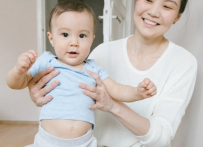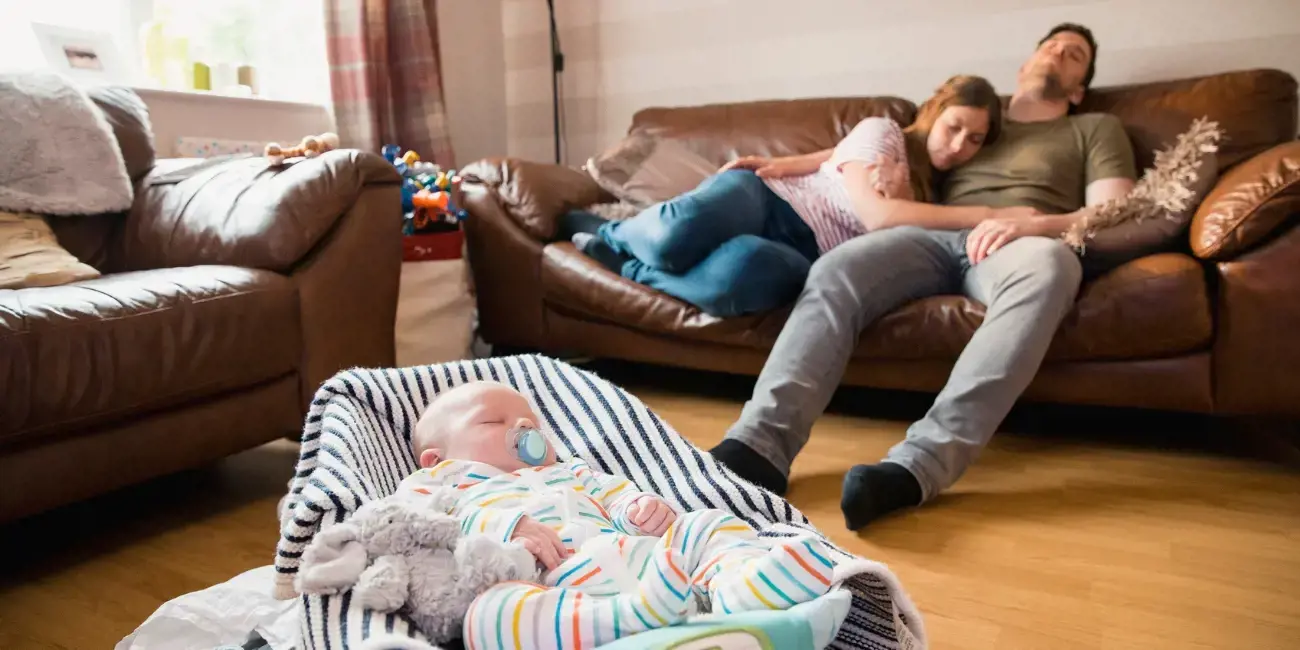In January 2011, eligible working parents in Australia gained access to Paid Parental Leave for the first time.
Until that year, Australia was one of only two countries in the western world without a paid parental scheme (the other is the USA). The historic legislation enabling Paid Parental Leave to start in Australia was passed by parliament in June 2010.
The ACTU heralded the introduction of the scheme as a great victory for working families and said it would increase workforce participation among women in their most productive years.
The Paid Parental Leave scheme provides two government-funded payments - Parental Leave Pay and Dad and Partner Pay. You'll find more information about Dad and Partner Pay here, and Parental Leave Pay:
- Is for eligible working parents;
- Can be transferred to the other parent
- Is paid at the National Minimum Wage
- Is paid for up to 18 weeks, continuously or in two blocks, after the birth or adoption of a child.
* Despite calls for its inclusion, the Paid Parental Leave scheme does not include the payment of superannuation.
What are the eligibility criteria for Parental Leave Pay?
Not all working parents are eligible to receive Paid Parental Leave, but you may be eligible to claim parental leave pay if you:
- Are the primary carer of a newborn child or newly adopted child.
- Are an Australian citizen or permanent resident
- Have met the Parental Leave Pay work test (see below) before the child's birth or adoption occurs
- Have received an individual adjusted taxable income of $150,000 or less in the financial year prior to the date of birth or date of claim (whichever is earlier); and
- Are on leave or not working from the time you become the child's primary carer.
*If you are a birth mother, there are some circumstances in which you can receive Parental Leave Pay for up to 18 weeks after the birth even if you are not the primary carer of your child. This may occur if you are unable to care for your child due to illness, or you may be a birth mother in an adoption or surrogacy arrangement.
A child's primary carer is the person who meets most of the child's physical needs, usually the mother of a newborn child or the initial primary carer of an adopted child*
What is the Work Test?
To meet the Parental Leave Pay work tests you must have worked for at least 10 of the 13 months prior to the birth or adoption of your child and for at least 330 hours in that 10 month period (just over one day a week).
If your child was born or adopted before 1 January 2020, you can't have more than an eight-week gap between two consecutive working days. If they were born on or after 1 January 2020, then you can't have more than 12 weeks between workdays.
A working day is a day you have worked for at least one hour.
Paid Leave (sick leave, annual leave and maternity leave) counts as working days. Previous periods of Parental Leave Pay or Dad and Partner Pay period of JobKeeper payment, jury service and time spent on workers/accident compensation can also count as work.
Exceptions to the work test may be made if you can't meet the requirements due to pregnancy complications and/or premature birth. There's also a Dangerous Jobs Provision which may help you meet the work test if you had to stop work while pregnant because of a hazardous workplace.
It is not necessary to work full-time and you may meet the eligibility requirements for Parental Leave Pay if you:
- Are a part-time, casual or seasonal worker
- Are a contractor or self-employed*
- Have multiple employers
- Have recently changed jobs
- Have worked overseas
*If you're self-employed, you can include your hours of work even if your business or family business is not running at a profit, provided that you are working for financial gain or reward.
Activities that don't count as work for the work test include:
- Unpaid leave, including unpaid maternity leave
- Income support programs with a work component
- Volunteer work
- Study through a scholarship or other monetary assistance
- Outstanding leave entitlements that are paid as part of a redundancy
Can I split up my Parental Leave Pay periods?
Yes. Before 1 July 2020, Parental Leave Pay was paid for a continuous block of up to 18 weeks (90 payable days) to eligible parents, but there is now flexibility around when it can be taken.
For children born or adopted on or after 1 July 2020, Parental Leave Pay currently includes:
A continuous Paid Parental Leave period of up to 12 weeks (60 payable days to be used in the first 12 months after the birth or adoption); and
30 Flexible Paid Parental Leave days (which must be taken within 24 months of the child's arrival).
You can connect the days to take up to 18 weeks off in one block or choose a shorter block (between 12 and 18 weeks) and take the remaining Flexible Paid Parental Leave days at a later time (before your child turns two).
The flexible days need to be agreed on with your employer and can be spread out. As an example, you might take two days off per week for 15 weeks to total 30 days of Flexible Paid Parental Leave.
If you're eligible for Paid Parental Leave, you need to claim it within 34 weeks of the birth or adoption of your child. It's best to apply before they arrive, and from 14 September 2020, the government will ask you how, and when, you want to get your Flexible Paid Parental Leave days.
What are Keeping in Touch days?
Your Parental Leave Pay will stop if you return to regular work, but you can Keep in Touch with your workplace in a lesser way and still receive Parental Leave Pay.
You're allowed to work up to 10 Keeping in Touch days to help you stay connected with your workplace or transition back into work. These days can be used in the weeks between your child's arrival and the end of your Paid Parental Leave period (but not within two weeks after the birth of your child).
Both you and your employer must agree (preferably in writing) before you can participate in Keeping in Touch days, and these days do not need to be used all at once.
Keeping in Touch days do not extend your Paid Parental Leave period and they must be a voluntary decision between you and your employer. Your employer cannot make you return to work if you don't want to.
In dollar terms, you must be paid your usual wages or salary in addition to your Parental Leave Pay for the time you attend work.
For active armed forces members of the Department of Defence of the Australian government, a compulsory recall to duty is not a return to work for the purposes of Paid Parental Leave. In this event, Parental Leave Pay may continue.
You don't need to tell Services Australia if you access Keeping in Touch days, but you do need to tell them if you return to work before your Paid Parental Leave period ends (by resuming regular work activities, using more than 10 Keeping in Touch days or accessing a Keeping in Touch Day in the first two weeks after your baby arrives).
What work can I do if I'm self-employed and getting Parental Leave Pay?
If you are self-employed, you can keep an eye on your business without being regarded as having returned to work. This means you're able to oversee the business' operations and perform the occasional administrative task.
The types of activities that may be considered as overseeing or performing an occasional administrative task may include:
- Paying an account
- Checking on the delivery of an order
- Approving the business accounts
- Dealing with ad hoc disputes
- Organising a repair
- Recruiting replacement staff to manage your absence from work
- Maintaining a basic level of contact with clients
- Keeping your professional skills up-to-date
You can't ‘actively run your business' or ‘maintain the daily operations of your business' before the end of your Paid Parental Leave period. If you do this, you'll be regarded as having returned to work and will no longer be entitled to Parental Leave Pay, even if you perform these tasks at reduced hours.
If you return to work or your circumstances change before the end of your 18 week Paid Parental Leave period you need to notify Services Australia. The unused part of your Parental Leave Pay may be transferred to your partner if they meet the eligibility criteria.
If you're self-employed, your Parental Leave Pay will be provided by Services Australia in fortnightly instalments.
How can I transfer my Parental Leave Pay?
If you return to work early or are no longer the primary carer of your child, then you can transfer some or all your Parental Leave Pay to a second carer who is:
- Your partner
- The other legal parent of your child
- The partner of your child's other legal parent
You and the second carer must claim and be eligible for Parental Leave Pay, and there's more detail about transferring the pay here.
It is possible for a dad or carer to get Parental Leave Pay and Dad and Partner Pay for the same child, though not at the same time. As a family, you can get up to 20 weeks Parental Leave Pay and Dad and Partner Pay combined, and as an individual, the maximum is 18 weeks.
Will my Parental Leave Pay affect other payments?
Parental Leave Pay is part of your taxable income, so it can have an impact on your tax obligations (including the Medicare Levy Surcharge, child support or HECS debt). It can also affect family assistance payments, income support payments and child support payments, and you can read more on this here.
It's important to keep your details current, and as a rule, you should tell Services Australia about any changes to your circumstances (around employment, care arrangements, contact details and domicile) when you receive Parental Leave Pay.
Will the Paid Parental Leave scheme affect existing leave entitlements offered by my employer?
The Paid Parental Leave scheme does not change any of your existing leave entitlements. If you are eligible, you will be able to access up to 18 weeks of government-funded Parental Leave Pay, as well as any of your existing employer-provided paid or unpaid leave.
In most cases, the government makes Parental Leave Payments to your employer, who then pays you.
You can take your Parental Leave Pay before, during or after any paid maternity or parental leave, or other employer-funded leave entitlements (such as annual leave or long service leave). Just keep in mind that you should organise leave from work with your employer at least 10 weeks before you plan to be off work.
If your employer currently provides paid maternity or parental leave through an industrial agreement, they cannot withdraw the entitlement for the life of that agreement.
Under the National Employment Standards in the Fair Work Act 2009, if you have been working for your employer for 12 months or more prior to the birth or adoption of your child, you may be entitled to access up to 12 months unpaid parental leave. You can also request an additional 12 months unpaid leave on top of this.
For more information about Parental Leave Pay, visit the Services Australia website. You'll also find information about paid and unpaid parental leave on the government's Fair Work Ombudsman site.



































